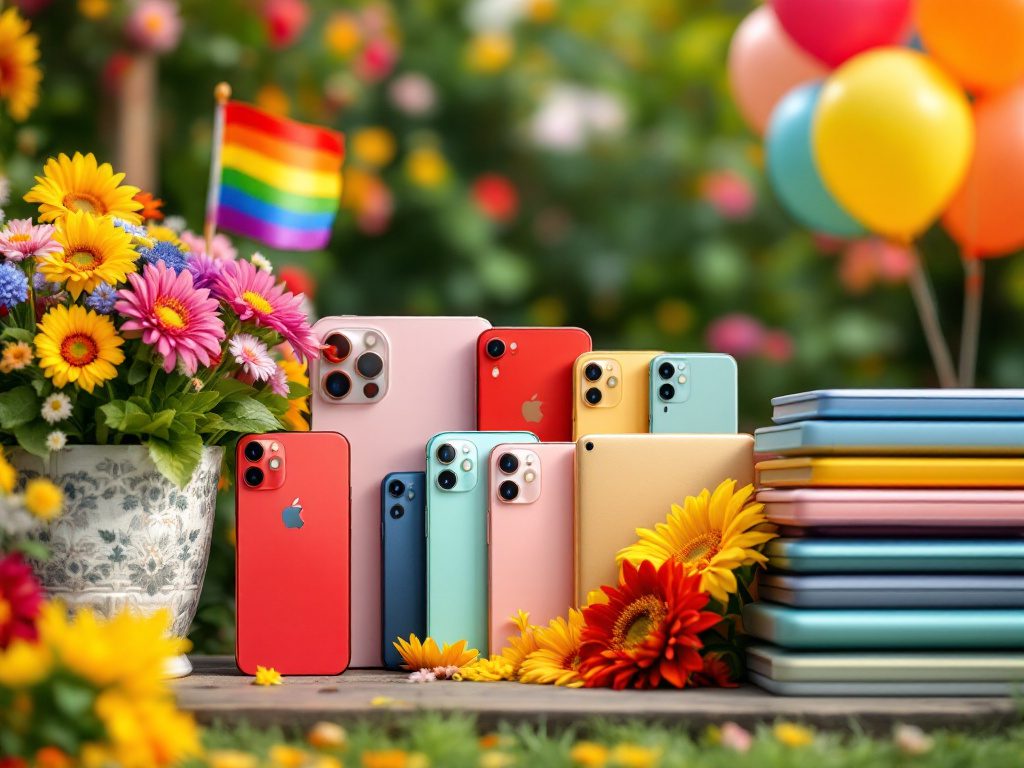Apple’s Pride Tradition: Design, Symbolism, and Strategy
Imagine walking into an Apple Store in late spring. Rainbow banners hang from crisp white ceilings, and a vibrant array of limited-edition Apple Watch bands beckons from behind minimalist glass. It’s more than a product launch. It’s an annual declaration: Apple stands with LGBTQ+ communities—and the message matters now as much as ever.
The release of the 2025 Pride Collection isn’t just about aesthetics. It sits squarely at the intersection of technology, culture, and activism. Each year, the company reimagines its Pride Edition gear, but 2025’s iteration lands in a climate of increasing political backlash against LGBTQ+ rights in the U.S. and globally. For Apple, these rainbow-striped products are as much about visibility as they are about commerce.
Unveiling its newest Pride Edition Sport Band, Apple weaves a literal tapestry of identity into each band. Hand-assembled from individually molded rainbow stripes, these wristbands are more than sequenced color—they introduce subtle variation, ensuring no two bands are exactly alike. That’s no accident. “The individuality in every piece mirrors the diversity of our community,” says Deirdre O’Brien, Apple’s Senior VP of Retail, in a recent interview. It’s a quiet nod to the idea that real inclusivity means seeing—and celebrating—difference.
The matching Pride Harmony watch face and iPhone/iPad wallpapers are equally dynamic. As users move their wrists or tap their phones, stripes morph, blend, and shift, displaying animated colors that represent the fluidity and vibrancy of LGBTQ+ lives. The symbolism is palpable: Queer identity, movement, and self-expression can’t be boxed in.
Beyond Rainbow-Washing: The Complex Politics of Corporate Pride
A closer look reveals the stakes are higher than a patriotic merchandising cycle. In recent years, the term “rainbow-washing” has surfaced—leveling criticism at companies that publicly tout LGBTQ+-friendly products or advertising each June while quietly donating to anti-LGBTQ+ politicians or shying from controversial stands. According to marketing scholar Dr. Rashad Robinson, CEO of Color of Change, “True allyship means showing up all year, especially when the focus fades or the opposition grows louder.”
Apple, uniquely, has turned its annual Pride rollout into an explicit commitment. Tim Cook, Apple’s CEO and one of the first openly gay Fortune 500 chiefs, has repeatedly used Apple’s brand and resources to advocate for LGBTQ+ policy, inclusion in tech, and workplace equality. Importantly, the company continues to financially support organizations serving LGBTQ+ communities, such as GLSEN, The Trevor Project, and ILGA World—even as some major tech firms pull back in the face of right-wing backlash. Bloomberg reported that while rival giants like Google and Amazon have slowed LGBTQ+ charity contributions and pared back Pride visibility in certain markets, Apple’s support has held steady and, in some cases, increased.
“In a time when LGBTQ+ rights are increasingly threatened at home and abroad, Apple refuses to retreat from its annual public displays of support. Actions, not marketing, define a company’s legacy.”
Critics on the right frequently deride such moves as empty, performative, or disruptive to the mythic “apolitical” consumer landscape. But for many progressives, corporate advocacy is not merely performative when it’s paired with persistent, year-round giving. The annual Pride Collection, then, is less a marketing gimmick and more a visible refusal to cede public space or cultural conversation around LGBTQ+ dignity and rights.
Global tech brands hold outsized sway over culture, and their support—or silence—sends ripples through policy, employment environments, and even family dinner conversations. When a flagship company like Apple centers inclusivity in its branding, it creates safer spaces and sets a new bar for corporate citizenship. That’s a stance with tangible effects in workplaces, schools, and legal fights still raging in dozens of U.S. states.
Access, Inclusion, and the Long March for LGBTQ+ Rights
For most Americans, the simple act of seeing a rainbow Apple Watch band at the gym or on a morning subway ride may seem minor. But as Stanford sociologist Dr. M. V. Lee Badgett argues, such visibility lowers stigma and raises consciousness—even among those who aren’t out or lack local support. The fact that the Pride Edition Sport Band is available in a fuller range of sizes and through Apple resellers worldwide signals an effort to boost inclusivity for all bodies, geographies, and spending power.
Beyond that, these products arrive at a time when over 500 anti-LGBTQ+ pieces of legislation have been introduced in U.S. states just since 2023, according to the Human Rights Campaign. Conservative groups in several states have pressured schools, libraries, and even corporations to drop Pride-themed items or events altogether. Here, the marketplace becomes a new front line. Apple’s decision to continue and expand its Pride Collection isn’t trivial; it’s a public stand against the rising tides of exclusion and erasure.
Of course, some progressives wish Apple would do more—calling for proactive hiring initiatives, expanded trans and nonbinary representation in advertising, or even speaking out more forcefully on legislative threats. Yet, as Harvard business professor Rosabeth Moss Kanter notes, “Consistent, visible, and material support matters. It shapes not just consumer attitudes, but what other companies will risk or aspire to do.” Apple’s annual rollout, by that measure, is a step in a very tough, very public march.
So what’s really at stake when a tech giant drops another rainbow-laced collection? Not just a colorful accessory for your wrist or phone. With each hand-assembled band and shimmering wallpaper, Apple challenges us to imagine a future where visibility isn’t a sales pitch, but a principle. In this polarized era, the power of corporate platforms to advance—or undermine—justice has never been more apparent. As Pride Month approaches, Apple’s wager on allyship and inclusion stands as both a product launch and a statement of enduring, progressive values.

